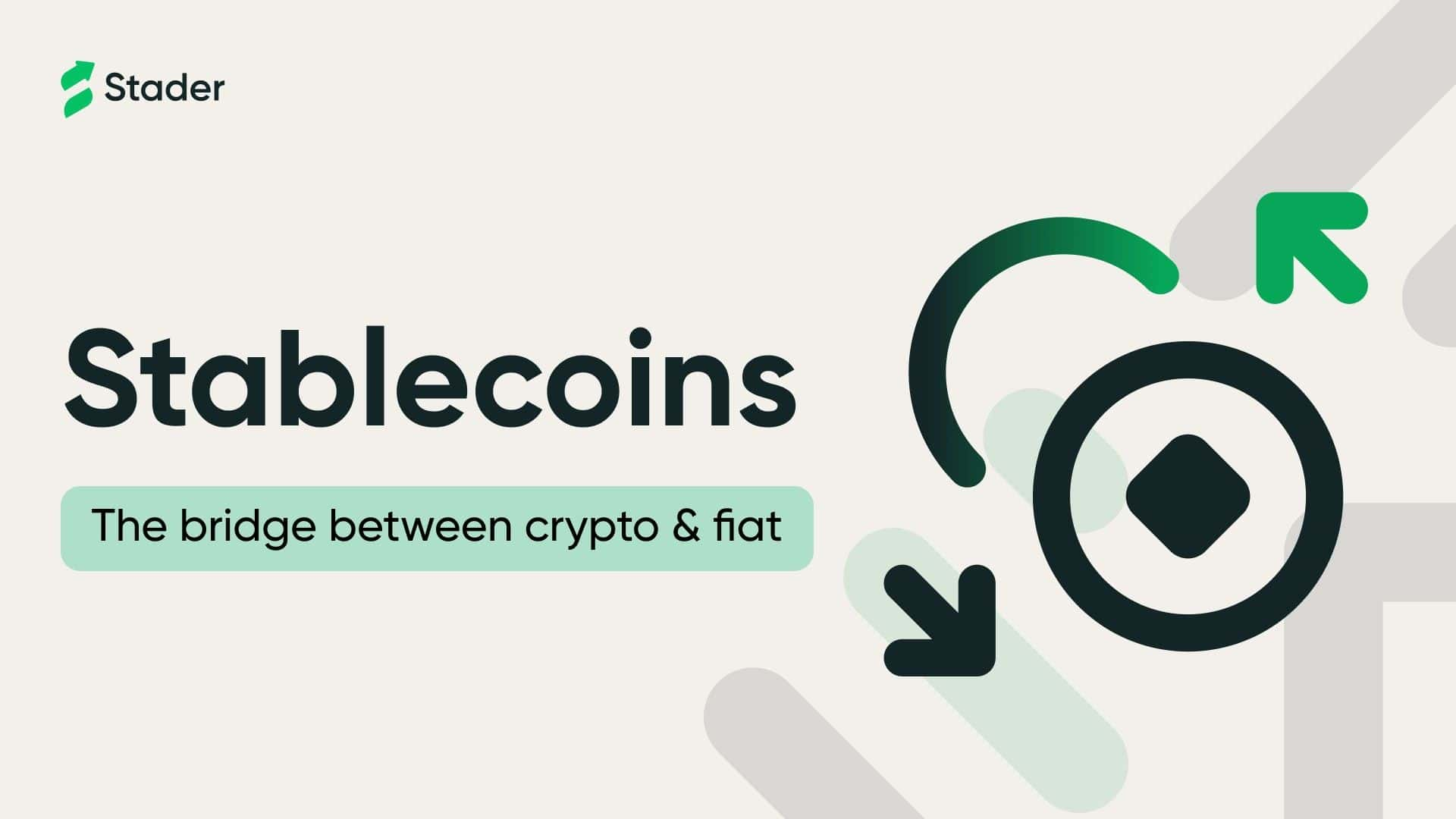Stablecoin — The bridge between Crypto & Fiat
A stablecoin is a bridge between the world of crypto and fiat. Learn how does it work and is true to the promise of zero/negligible volatility.

A stablecoin is a bridge between the world of crypto and fiat. But how does it actually work? How trustworthy are these with respect to the promise of zero/negligible volatility?
We’ll answer these questions in detail in this article.
But first, let’s start with the definition.
What is a stablecoin?
A stablecoin is a cryptocurrency that isn’t exposed to volatility — therefore the term “stable”. It is generally pegged to the value of a centralized currency like USD or GBP.
Meaning although you’re buying a crypto stablecoin, it’ll act like USD and always be in tandem with the value of USD. And at any moment you can redeem 1 USD based stable coin (BUSD, USDT, USDC, etc.) for 1 USD.
But how does it actually work? Can any cryptocurrency declare itself to be a stablecoin and claim a valuation of 1 USD?
No. There are different requirements to create a stablecoin depending on the type of stablecoin you’re going for.
In general, there are 4 types of stablecoins:
1. Fiat-Backed Stablecoin
Fiat-backed stablecoins like USDT, USDC, and BUSD are the most popular stablecoins.
In order for you to create a fiat-backed stablecoin, you need to have a reserve-to-currency ratio of 1:1. That means, you need to hold 1 million USD in reserve to issue 1 million USDT.
If under any condition, the reserve of USDT goes below the 1:1 ratio, the stablecoin runs the risk of de-pegging (decrease in valuation) which can cause massive losses for its holders.
2. Crypto-Backed Stablecoin
Crypto-backed stablecoins are similar to fiat stablecoins with one key difference — the reserve currency in this case is crypto.
However, given the high volatility in crypto, it’s impossible to work with a 1:1 ratio. So you need to overcollateralize the reserve asset.
For example, DAI is the most popular crypto-stable coin. The value of DAI is pegged to the value of USD but it is backed by ETH.
So in this case, in order for you to mint 100 DAI (=100 USD) you need to have an over-collateralization of 150% requiring you to reserve 150 USD worth of ETH.
It gives a 50% cushion against volatility.
3. Commodity Backed Stablecoin
As the name suggests, commodity-backed stablecoins are stablecoins backed by commodities such as gold or diamond.
In this case, you hold a certain amount of gold in reserve and issue a currency pegged to the value of gold like $PAXG.
Since commodities are seemingly non-volatile to some extent, these stablecoins attract a lot of holders.
4. Algo Stablecoin
Algo stablecoin is the most technologically advanced stablecoin of them all.
Instead of holding any asset or currency in reserve, algo-stablecoins use algorithms to balance the value of a coin against another coin.
You can compare it to central banks and how they control the currency of countries. But since central banks have the power to change policies and create laws, they are protected from any downfall.
However, in the algo-stablecoin space, if the algorithm fluctuates or creates a death spiral, where the value of the core asset plunges taking the stablecoin down with it, the whole ecosystem implodes.
Helio’s Destablecoin
Besides the 4 primary types of stablecoins, there is one more. It’s the destablecoin $HAY created by Helio.
What’s a destablecoin?
Destablecoin stands for decentralized stablecoin. They are fully decentralized.
Destablecoins such as HAY will use decentralized assets such as BNB as collateral. Compared to a stablecoin like BUSD, HAY differs in the element of decentralization, as BUSD is a centralized, fiat-backed stablecoin regulated by a centralized custodian, while HAY is collateralized by decentralized assets such as BNB, and regulated by Helio, a decentralized protocol.
Destablecoins utilize decentralized, liquid-staked, crypto assets only as collateral and do not aim to achieve absolute price stability with fiat-based currencies such as USD.
Users will still be able to borrow HAY at a collateral ratio of ~66% LTV by depositing BNB as collateral on the protocol, liquidity mining on LP DEXes, and using HAY as a means of payment to transfer value for goods & services.